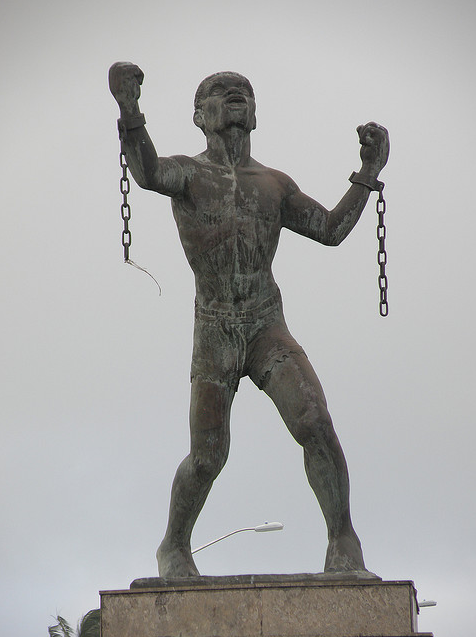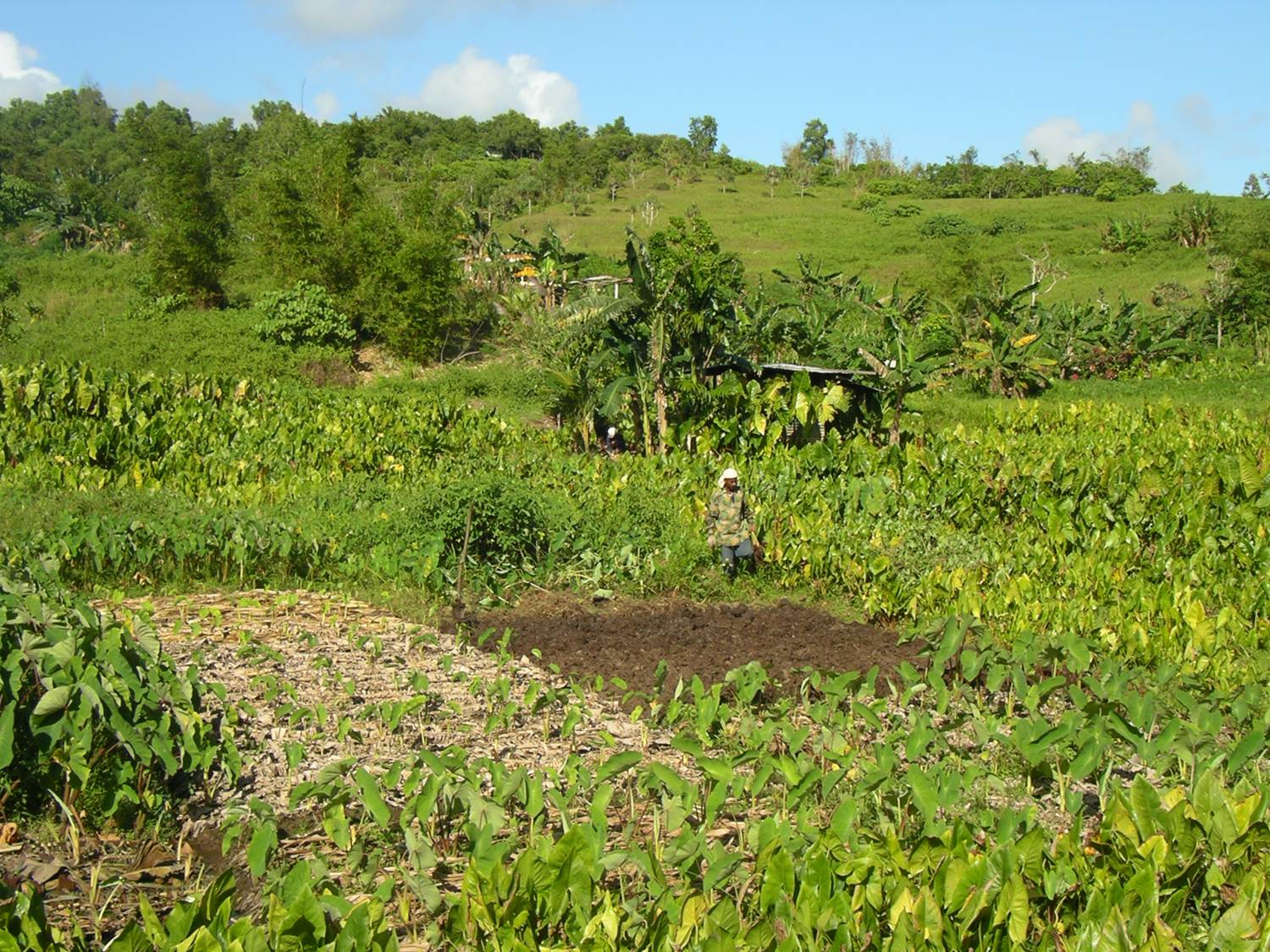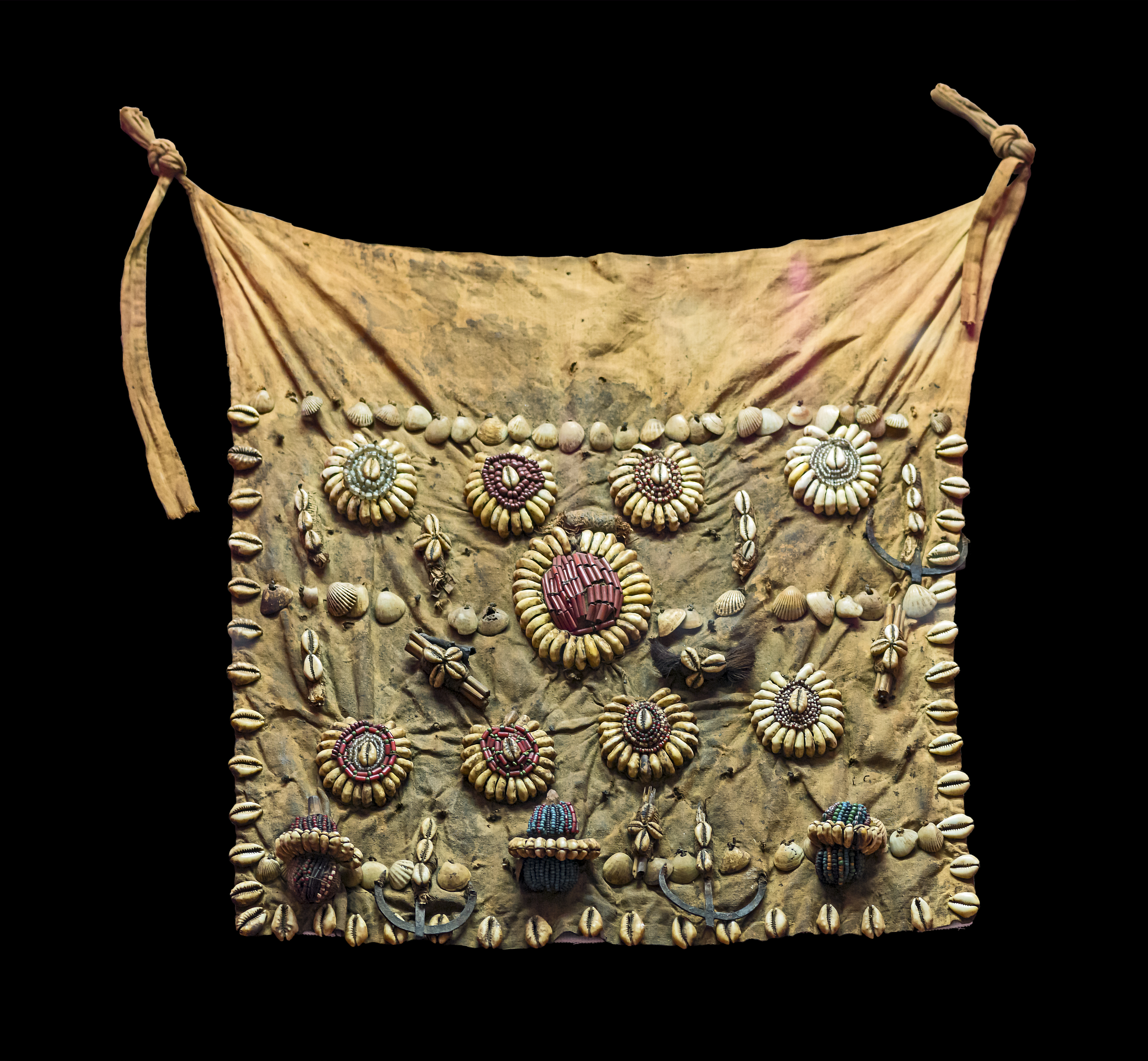|
Afro-Barbadians
Black Barbadians or African Barbadians are Barbadians of entirely or predominantly African descent. 92.4% of Barbados' population is black and 3.1% is multiracial based on estimates in 2010. Origins Most of the enslaved Africans brought to Barbados were from the Bight of Biafra (62,000 Africans), the Gold Coast (59,000 Africans), and the Bight of Benin (45,000 Africans).This citation is brokeAfrican origins of the slaves from British and former British Antilles/ref> Other African slaves came from Central Africa (29,000 slaves), Senegambia (14,000 Africans), the Windward Coast (13,000 slaves) and from Sierra Leone (9,000 slaves). Africans from the Bight of Biafra were primarily Igbo people in the Atlantic slave trade, Igbo, Ibibio and Efik; Africans from the Gold Coast were primarily Akan; Africans from the Bight of Benin were primarily Yoruba, Ewe and Fon; and Africans from Central Africa were primarily Kongo. [...More Info...] [...Related Items...] OR: [Wikipedia] [Google] [Baidu] |
Barbados
Barbados is an island country in the Lesser Antilles of the West Indies, in the Caribbean region of the Americas, and the most easterly of the Caribbean Islands. It occupies an area of and has a population of about 287,000 (2019 estimate). Its capital and largest city is Bridgetown. Inhabited by Kalinago people since the 13th century, and prior to that by other Amerindians, Spanish navigators took possession of Barbados in the late 15th century, claiming it for the Crown of Castile. It first appeared on a Spanish map in 1511. The Portuguese Empire claimed the island between 1532 and 1536, but abandoned it in 1620 with their only remnants being an introduction of wild boars for a good supply of meat whenever the island was visited. An English ship, the ''Olive Blossom'', arrived in Barbados on 14 May 1625; its men took possession of the island in the name of King James I. In 1627, the first permanent settlers arrived from England, and Barbados became an English and lat ... [...More Info...] [...Related Items...] OR: [Wikipedia] [Google] [Baidu] |
Bajan Creole
Bajan , or Bajan Dialect, is an English-based creole language with African and British influences spoken on the Caribbean island of Barbados. Bajan is primarily a spoken language, meaning that in general, standard English is used in print, in the media, in the judicial system, in government, and in day-to-day business, while Bajan is reserved for less formal situations, in music, or in social commentary. Ethnologue reports that, as of 2018, 30,000 Barbadians were native English speakers, while 260,000 natively spoke Bajan. Languages Bajan is the Caribbean creole with grammar that most resembles Standard English. There is academic debate on whether its creole features are due to an earlier pidgin state or to some other reason, such as contact with neighbouring English-based creole languages. Due to emigration to the Province of Carolina, Bajan has influenced American English and the Gullah language spoken in the Carolinas. Regionally, Bajan has ties to Belizean and Guyanese ... [...More Info...] [...Related Items...] OR: [Wikipedia] [Google] [Baidu] |
Multiracial People
Mixed race people are people of more than one race or ethnicity. A variety of terms have been used both historically and presently for mixed race people in a variety of contexts, including ''multiethnic'', ''polyethnic'', occasionally ''bi-ethnic'', '' Métis'', '' Muwallad'', ''Colored'', '' Dougla'', '' half-caste'', '' ʻafakasi'', '' mestizo'', ''Melungeon'', '' quadroon'', ''octoroon'', '' sambo/zambo'', '' Eurasian'', ''hapa'', ''hāfu'', '' Garifuna'', '' pardo'' and ''Guran''. A number of these terms are now considered offensive, in addition to those that were initially coined for pejorative use. Individuals of mixed-race backgrounds make up a significant portion of the population in many parts of the world. In North America, studies have found that the mixed race population is continuing to grow. In many countries of Latin America, mestizos make up the majority of the population and in some others also mulattoes. In the Caribbean, mixed race people officially make up ... [...More Info...] [...Related Items...] OR: [Wikipedia] [Google] [Baidu] |
Barbados Slave Code
The Barbados Slave Code of 1661, officially titled as An Act for the better ordering and governing of Negroes, was a law passed by the Parliament of Barbados to provide a legal basis for slavery in the English colony of Barbados. It is the first comprehensive Slave Act, and the code's preamble, which stated that the law's purpose was to "protect them lavesas we do men's other goods and Chattels", established that black slaves would be treated as chattel property in the island's court. Details The slave code described black people as 'an heathenish, brutish and an uncertaine, dangerous kinde of people'. The Barbados slave code ostensibly sought to protect slaves from cruel masters ("the Negroes and other Slaves be well provided for, and guarded from the Cruelties and Insolences of themselves or other ill-tempered People or Owners") and masters (and "any Christian") from unruly slaves; in practice, it provided extensive protections for masters, but not for slaves. The law required ... [...More Info...] [...Related Items...] OR: [Wikipedia] [Google] [Baidu] |
Soil Management
Soil management is the application of operations, practices, and treatments to protect soil and enhance its performance (such as soil fertility or soil mechanics). It includes soil conservation, soil amendment, and optimal soil health. In agriculture, some amount of soil management is needed both in nonorganic and organic types to prevent agricultural land from becoming poorly productive over decades. Organic farming in particular emphasizes optimal soil management, because it uses soil health as the exclusive or nearly exclusive source of its fertilization and pest control. Soil management is an important tool for addressing climate change by increasing soil carbon and as well as addressing other major environmental issues associated with modern industrial agriculture practices. Project Drawdown highlights three major soil management practices as actionable steps for climate change mitigation: improved nutrient management, conservation agriculture (including No-till agricul ... [...More Info...] [...Related Items...] OR: [Wikipedia] [Google] [Baidu] |
Cash Crop
A cash crop or profit crop is an agricultural crop which is grown to sell for profit. It is typically purchased by parties separate from a farm. The term is used to differentiate marketed crops from staple crop (or "subsistence crop") in subsistence agriculture, which are those fed to the producer's own livestock or grown as food for the producer's family. In earlier times, cash crops were usually only a small (but vital) part of a farm's total yield, while today, especially in developed countries and among smallholders almost all crops are mainly grown for revenue. In the least developed countries, cash crops are usually crops which attract demand in more developed nations, and hence have some export value. Prices for major cash crops are set in international trade markets with global scope, with some local variation (termed as "basis") based on freight costs and local supply and demand balance. A consequence of this is that a nation, region, or individual producer relying ... [...More Info...] [...Related Items...] OR: [Wikipedia] [Google] [Baidu] |
Sugar Cane
Sugarcane or sugar cane is a species of (often hybrid) tall, perennial grass (in the genus '' Saccharum'', tribe Andropogoneae) that is used for sugar production. The plants are 2–6 m (6–20 ft) tall with stout, jointed, fibrous stalks that are rich in sucrose, which accumulates in the stalk internodes. Sugarcanes belong to the grass family, Poaceae, an economically important flowering plant family that includes maize, wheat, rice, and sorghum, and many forage crops. It is native to the warm temperate and tropical regions of India, Southeast Asia, and New Guinea. The plant is also grown for biofuel production, especially in Brazil, as the canes can be used directly to produce ethyl alcohol (ethanol). Grown in tropical and subtropical regions, sugarcane is the world's largest crop by production quantity, totaling 1.9 billion tonnes in 2020, with Brazil accounting for 40% of the world total. Sugarcane accounts for 79% of sugar produced globally (most of the rest is ... [...More Info...] [...Related Items...] OR: [Wikipedia] [Google] [Baidu] |
South Carolina
)'' Animis opibusque parati'' ( for, , Latin, Prepared in mind and resources, links=no) , anthem = " Carolina";" South Carolina On My Mind" , Former = Province of South Carolina , seat = Columbia , LargestCity = Charleston , LargestMetro = Greenville (combined and metro) Columbia (urban) , BorderingStates = Georgia, North Carolina , OfficialLang = English , population_demonym = South Carolinian , Governor = , Lieutenant Governor = , Legislature = General Assembly , Upperhouse = Senate , Lowerhouse = House of Representatives , Judiciary = South Carolina Supreme Court , Senators = , Representative = 6 Republicans1 Democrat , postal_code = SC , TradAbbreviation = S.C. , area_rank = 40th , area_total_sq_mi = 32,020 , area_total_km2 = 82,932 , area_land_sq_mi = 30,109 , area_land_km2 = 77,982 , area_water_sq_mi = 1,911 , area_water_km2 = 4,949 , area_water_percent = 6 , population_rank = 23rd , population_as_of = 2022 , 2010Pop = 5282634 , populati ... [...More Info...] [...Related Items...] OR: [Wikipedia] [Google] [Baidu] |
Royal African Company
The Royal African Company (RAC) was an English mercantile ( trading) company set up in 1660 by the royal Stuart family and City of London merchants to trade along the west coast of Africa. It was led by the Duke of York, who was the brother of King Charles II and in 1685, York took the throne as James II. It was established after Charles II gained the English throne in the Restoration of 1660. While its original purpose was to exploit the gold fields up the Gambia River, which were identified by Prince Rupert during the Interregnum, it soon developed and led a brutal and sustained slave trade. It also extracted other commodities, mainly from the Gold Coast. After becoming insolvent in 1708, it survived in a state of much reduced activity until 1752 when its assets were transferred to the new African Company of Merchants, which lasted until 1821. History Background In the 17th century the settlements on the west coast of Africa, though they had an important trade of th ... [...More Info...] [...Related Items...] OR: [Wikipedia] [Google] [Baidu] |
Kongo People
The Kongo people ( kg, Bisi Kongo, , singular: ; also , singular: ) are a Bantu ethnic group primarily defined as the speakers of Kikongo. Subgroups include the Beembe, Bwende, Vili, Sundi, Yombe, Dondo, Lari, and others. They have lived along the Atlantic coast of Central Africa, in a region that by the 15th century was a centralized and well-organized Kingdom of Kongo, but is now a part of three countries. Their highest concentrations are found south of in the Republic of the Congo, southwest of Pool Malebo and west of the Kwango River in the Democratic Republic of the Congo, north of Luanda, Angola and southwest Gabon. They are the largest ethnic group in the Republic of the Congo, and one of the major ethnic groups in the other two countries they are found in. In 1975, the Kongo population was reported as 4,040,000. The Kongo people were among the earliest indigenous Africans to welcome Portuguese traders in 1483 CE, and began converting to Catholicism in the l ... [...More Info...] [...Related Items...] OR: [Wikipedia] [Google] [Baidu] |
Fon People
The Fon people, also called Fon nu, Agadja or Dahomey, are a Gbe ethnic group.Fon people Encyclopædia Britannica, undated, 1.7 million population, Retrieved June 29, 2019 They are the largest ethnic group in found particularly in its south region; they are also found in southwest and . Their total population is estimated to be about 3,500,000 people, and they speak the Fon language, a me ... [...More Info...] [...Related Items...] OR: [Wikipedia] [Google] [Baidu] |
Ewe People
The Ewe people (; ee, Eʋeawó, lit. "Ewe people"; or ''Mono Kple Volta Tɔ́sisiwo Dome'', lit. "Ewe nation","Eʋenyigba" Eweland;) are a Gbe-speaking ethnic group. The largest population of Ewe people is in Ghana (6.0 million), and the second largest population is in Togo (3.1 million). They speak the Ewe language ( ee, Eʋegbe) which belongs to the Gbe family of languages. They are related to other speakers of Gbe languages such as the Fon people, Fon, Gen language, Gen, Phla Phera, Gun, Maxi, and the Aja people of Togo, Benin and southwestern Nigeria. Demographics Ewe people are located primarily in the coastal regions of West Africa: in the region south and east of the Volta River to around the Mono River at the border of Togo and Benin; and in the southwestern part of Nigeria (close to the Atlantic Ocean, stretching from the Nigeria and Benin border to Epe). They are primarily found in the Volta Region in southeastern Ghana, southern Togo, in the southwestern part of B ... [...More Info...] [...Related Items...] OR: [Wikipedia] [Google] [Baidu] |









